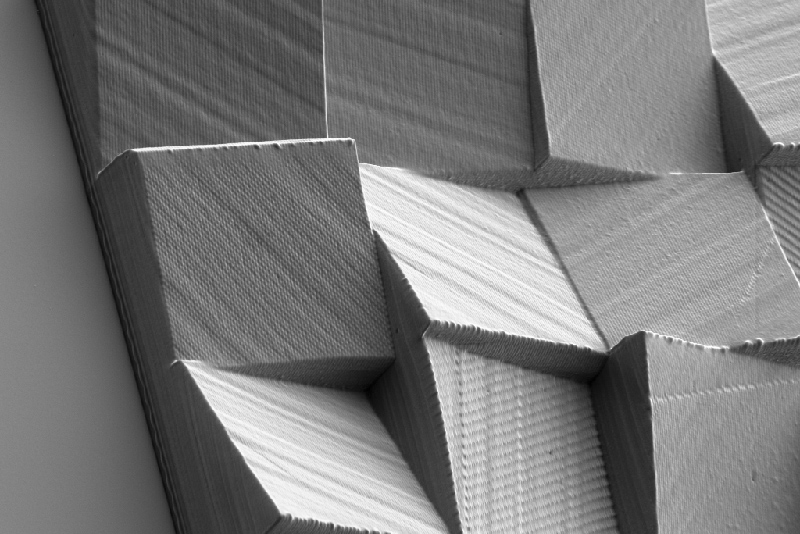2-photon polymerization is a generative process with possible line widths and heights below the diffraction limit. Due to the physical effect of two-photon absorption in a photosensitive polymer, almost any geometry can be generated. This is done by a relative movement between a focused laser beam and the sample, consisting of a substrate and liquid photopolymer. The polymer cross-links exclusively in a volumetric pixel, the so-called voxel, within the laser focus.
Depending on the laser power set and the polymer used, line widths from 150 nm and line heights from 400 nm are possible; the resolution of the positioning table is 5 nm. In order to produce structures in up to three dimensions, the paths to be scanned by the laser are specified by a file. The Fraunhofer IPT uses the "Photonic Professional GT" device from Nanoscribe GmbH.
2-Photon Polymerization
Small structures with large effect

The Fraunhofer IPT is traditionally closely associated with toolmaking. Complex geometries and combinations of individual curvatures and micro- or Nano structuring can significantly improve the functionality and efficiency of optical systems. However, established machining or lithographic processes often no longer do justice to modern design programs.
For this reason, the Fraunhofer IPT has set itself the goal of establishing 2-photon polymerization as a mastering technology for established molding processes such as injection molding, precision molding or roll-to-roll molding. Within the framework of various joint projects, the entire process chain from optical design to replication was mapped in cooperation with various companies in order to guarantee application-oriented research and development.
The method is also used in biology: The Descemet membrane, a layer in the cornea of the human eye, was discovered in the Institute's own bio laboratory. After this structure was moulded into a biomaterial, human stem cells differentiated into corneal endothelial cells. This enables the production of implants based on the patient's own material so that rejection reactions are avoided and a lack of donor implants can be avoided in the future with the patient's own material. Corneal endothelial cells can be used to cure the disease of corneal clouding that blinds nearly two million people annually and worldwide. Another example is the individual prism array shown in the picture (designed by LightTrans International UG with the software VitualLab Fusion). Depending on the arrangement of the individual prisms, the structure either displays lettering or projects white surfaces.
Our service
- Feasibility studies for individual structural geometries
- Parameter tests to optimize individual structures
- Production of structures on surfaces up to 1 cm².
- Impression of the structures in silicone or nickel, in up to 2.5 dimensions
- Structuring of fiber end surfaces
